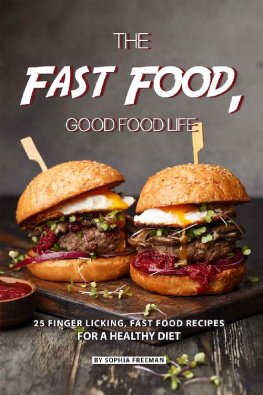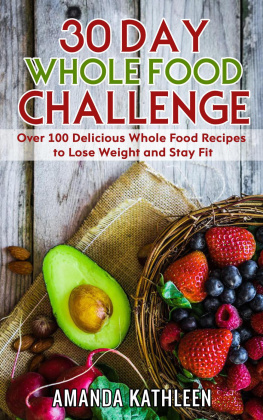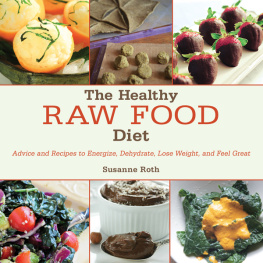| Book of Tasty and Healthy Food |
| Anastas Mikoyan & Boris Ushumirskiy |
| SkyPeak Publishing (Sep 2012) |
|
"Book of Tasty and Healthy Food" is a soviet collection of culinary recipes and food-preparation hints, curated by the USSR Ministry of Food and by people's commissar Anastas Mikoyan himself. It was first published in 1939. This book discusses the basics of healthy eating, provides information about food products made in USSR and gives recipes of various dishes. Updated editions of the book were coming out almost every year. There were about 8 million copies of the book printed since 1952.
BOOK OF TASTY AND HEALTHY FOOD
Book of Tasty and Healthy Food
Ministry of the Food Industry , USSR
vii
BOOK OF TASTY AND HEALTHY FOOD
Copyright 201 SkyPeak Publishing, LLC
All rights reserved.
ISBN -10 : 0615691358
ISBN-13: 978-0615691350
vii
BOOK OF TASTY AND HEALTHY FOOD
CONTENTS
Introduction | i |
| Selecting Dishes for Breakfast, Lunch and Dinner | |
| Order of Dinner Preparation | |
| Setting up the Table | |
| Sample Menus for All Seasons | |
| Cold Dishes and Appetizers | |
| Soups | |
| Fish | |
| Meat | |
| Poultry and Game | |
| Vegetables and Mushrooms | |
| Grain and Flour Dishes | |
| Dairy and Egg Dishes | |
| Pastry | |
| Sweets | |
| Baby/Child Food | |
| Special Diets | |
| Preserves, Marinades, Pickles | |
| Cold and Hot Beverages | |
| Old Recipes | |
| Conversion | |
vii
BOOK OF TASTY AND HEALTHY FOOD
vii
BOOK OF TASTY AND HEALTHY FOOD
INTRODUCTION
"Book of Tasty and Healthy Food" - Iconic Cookbook of the USSR
"Book of Tasty and Healthy Food" is a soviet collection of culinary recipes and food-preparation hints, curated by the USSR Ministry of Food and by people's commissar Anastas Mikoyan himself. It was first published in 1939.
This book discusses the basics of healthy eating, provides information about food products made in USSR and gives recipes of various dishes.
Updated editions of the book were coming out almost every year. There were about 8 million copies of the book printed since 1952.
Currently the "Book of Tasty and Healthy Food" is viewed as one of canonic symbols of Soviet propaganda: the assortment of ingredients described in the book was almost never available in stores to an average Soviet citizen.
History and Background
The idea to create a modernized and universal culinary book first appeared in mid-1930s, after food ration cards were done away with. It was first envisioned as a scientific work, emphasizing the importance of healthy nutrition. It was written by experienced chefs, do ctors and prominent scientists. First edition was published in 1939 .
vii
BOOK OF TASTY AND HEALTHY FOOD
vii
BOOK OF TASTY AND HEALTHY FOOD

SELECTING DISHES FOR BREAKFAST, LUNCH AND DINNER
Correct distribution of nutrients and selection of dishes during the day is one of the most important requirements of rational nutrition.
While selecting ingredients for breakfast, lunch, and dinner, you have to consider which particular foods and their quantities are required for different members of the family, depending on their age and occupation.
A person who leaves their home in the morning without having breakfast will quickly tire at work and will experience loss of energy far ahead of lunch. Overabundant lunch on the other hand will result in drowsiness and loss of productivity.
Adults should eat three to four times a day, while children and adolescents should eat four to five times.
All these circumstances require us to consider how to plan our meals, how to allocate food products throughout the day, what to cook for breakfast, lunch, and dinner.


Breakfast first of all has to be nourishing, it could consist of boiled or fried meat or fish, eggs, cheese, bread, tea, coffee, or milk. It's advisable to eat porridge (oatmeal, buckwheat, millet) with milk or butter, and fruits.
Lunch - about three to four hours after start of work - should include one hot dish, preferably vegetarian (casserole, ragout, burgers), sandwiches with tea (or milk or coffee). It can also include hot dogs or bratwurst.
It is recommended to have dinner sometime after finishing work, when a person had some rest and managed to work up an appetite. Dinner could have up to three courses. First course -- meat, vegetable, or fish soup, second course -- roasted or fried meat, fish, or vegetable dish, and dessert - compote, pastry and fruits. To improve the appetite before the beginning of dinner it is recommended to serve an appetizer or a salad.
If a meat-based soup (shchi, borscht, pickle soup) is served for the first course, then the second course should be light -- cooked from vegetables, grain, or fish; and conversely, if the first course is light (broth with vegetables or soup-puree), then the second course should be more substantial -- dishes with meat or fish with garnish.
Supper is always assumed to be light, and should be eaten no later than two to three hours before sleep. Recommendations include salads, yogurt, eggs, sandwiches, vegetable casseroles, milk, tea, vegetable and fruit juices.
If work schedule or other circumstances do not permit to eat four meals per day, three meals can be eaten instead - a big breakfast before work, another meal during a break and dinner after work.
Cumulative amount of food per day (or daily ration) depends on height, weight, age, climate, type of work and season. It is not advisable to eat too much meat. It is recommended that plenty of plant-based foods are included - vegetables, fruits and berries.
The menu must have variety. Oftentimes, this is overlooked. Not all housewives take the time and effort to make a plan for food preparation in advance. Mostly they only have around 10 or 12 dishes that they alternate throughout the years, and the family receives monotonous meals.
Seasons should also be taken into consideration. In the fall and winter hot meat and fish soups should be consumed, and in the spring and summer many prefer cold soups - cold borscht, fruit and berry soups. Fish products are more plentiful in the spring and fall, and during spring and summer dairy, eggs, fowl and vegetables are abundant.
Very important for menu selection is the frequency with which different dishes and ingredients are consumed. Borscht, shchi, cutlets will taste more delicious if they appear on the menu once every ten days, or every week, at most. Therefore it is important to think of daily menu for ten days in advance and stick to it, if possible. Combining foods is also important - for example, if potatoes or porridge were eaten for breakfast, it is better not to eat these foods again for lunch - it is better to eat a vegetable casserole instead.














